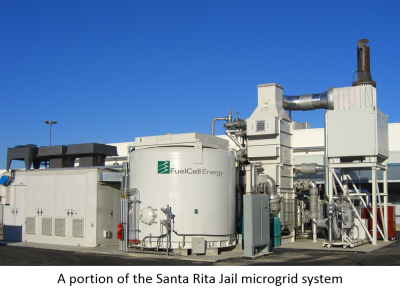Microgrids—interconnected sources of distributed energy resources (such as solar and wind power), energy storage, and electrical loads that can operate either independently or connected to a surrounding electricity grid—have emerged as a promising means of increasing energy reliability and resiliency while reducing environmental impacts and lowering energy costs. Today, microgrids have emerged as a promising means of organizing and coordinating the deployment and operation of distributed energy resources (DER), such as combined heat and power (CHP), renewables such as photovoltaic (PV) and wind, energy storage systems, diesel generators, and controllable loads, either individually or in combination. Consumers are increasingly motivated to adopt DER in order to increase energy self-sufficiency, and increase energy reliability and resiliency, while lowering energy costs and reducing environmental impact.
CERTS has made major contributions to the industry adoption of microgrids through the development of a set of advanced microgrid control and integration techniques, known collectively as the CERTS Microgrid Concept. The Concept has been further validated via testing at a full-scale microgrid demonstration test bed operated by American Electric Power (AEP), the largest electric utility in the Midwestern United States. The test bed utilized both pre-commercial prototypes and commercial sources commissioned from industry-established vendors of distributed generation equipment.
The CERTS Microgrid Concept represents an innovative approach to controlling the electrical operation of the energy sources and loads within a microgrid while minimizing the need for communication among them in order to establish and maintain the electrical requirements for safe, stable operation.
The design of the CERTS Microgrid provides high system reliability and great flexibility in the placement of distributed generation within the microgrid. The CERTS Microgrid offers these functionalities at much lower costs than traditional approaches by incorporating peer-to-peer and plug-and-play concepts for each component within the microgrid.
The peer-to-peer concept insures that no single component, such as a master controller or a central storage unit, is required for operation of the microgrid. Therefore, by its very design, the CERTS Microgrid can continue operating with loss of an individual component or generator. (With one additional source, (N+1) it can insure even higher levels of reliability.)
The plug-and-play concept means that a distributed energy resources unit can be placed at any point within the microgrid without re-engineering its controls. The plug-and-play functionality is similar to the flexibility one has with home appliances. That is, just as an appliance can be plugged in wherever there is an outlet, one can similarly locate distributed energy resources units at any location within a facility or building where they might be most needed. This is in sharp contrast to the traditional model, which clusters distributed generation at a single point in order to make the electrical integration tasks simpler. In combined heat and power applications, the plug-and-play model facilitates placing distributed energy resources immediately adjacent to heat loads, thereby allowing more effective use of waste heat without a complex heat distribution system, such as steam and chilled water pipes, and the energy losses associated with them.
Principal Investigator

